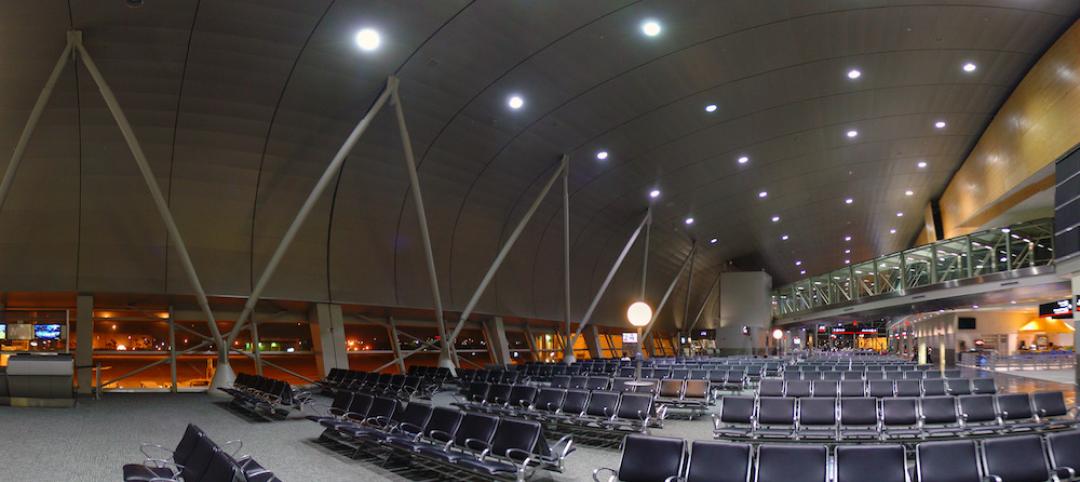A new product from PocketCake, called VRSCA (for Virtual Reality Simulation Converter Assembly), is three times more powerful than the average high-performance computer and allows for up to eight people to experience a virtual reality simulation at the same time.
VR enables users to experience immersive, computer-generated 3D environments through the use of specialized headsets and state of the art modeling software. Since the price of VR headsets and software has dropped significantly in recent years, developers are limited only by their imaginations and processing efficiency.
PocketCake is releasing a new product, the VRSCA (for Virtual Reality Simulation Converter Assembly), to remove the limits on processing power and setting developers' imaginations free.
Most computers are not equipped to handle the massive volume of data contained in a typical VR simulation file. A high performance laptop computer can process the data necessary to simulate a 25,000 square-foot building at a frequency of 25 frames per second.
By contrast, VRSCA processes the same model at 80 frames per second. A 100,000-square-foot model with defined interior and dynamic lighting would crash the average high-powered computer. VRSCA, on the other hand, runs the simulation with ease: no lag; no overheating.
VRSCA allows for up to eight people, wearing headsets such as the Oculus Rift, to experience a virtual reality simulation in the same room at the same time.
Virtual reality simulations for multiple viewers
VRSCA is available in four models: a single viewer, a dual viewer, a 4-person viewer and an 8-person viewer. The single, dual and 4-person viewers are portable. Each VRSCA is capable of hosting as many as 58 viewers remotely. This means simulations can be viewed simultaneously by 58 viewers in different locations.
VRSCA can be equipped with options such as a controller that allows for easy navigation through a simulation and the ability to change spawn points and control lighting.
Stanford graduate and hardware engineering manager for QuEST Rail, Matt Rogge PhD, EE is overseeing design and production of VRSCA. Dr. Rogge's knowledge and experience in railroad control electronics and digital systems provides a key element to the VRSCA project's success.
For more information, visit: www.pocketcake.com/vr.html.
Related Stories
| Aug 1, 2016
K-12 SCHOOL GIANTS: In a new era of K-12 education, flexibility is crucial to design
Space flexibility is critical to classroom design. Spaces have to be adaptable, even allowing for drastic changes such as a doubling of classroom size.
| Jul 29, 2016
AIRPORT FACILITIES GIANTS: Airports binge on construction during busy year for travel
Terminal construction will grow by nearly $1 billion this year, and it will keep increasing. Airports are expanding and modernizing their facilities to keep passengers moving.
| Jul 29, 2016
Top 35 Airport Terminal Architecture and A/E Firms
Corgan, HOK, and Gensler top Building Design+Construction’s annual ranking of the nation’s largest airport terminal architecture and A/E firms, as reported in the 2016 Giants 300 Report.
Architects | Jul 28, 2016
Connecting the dots: Architecture and design in a changing world
What do Tesla, Airbnb and Amazon have in common? They’re all shifting the paradigm for quality of life and the built environment, as CallisonRTKL senior associate VP Jayson Lee explains.
| Jul 26, 2016
ENGINEERING GIANTS: Firms continue to push innovation
Trends include 3D printing, modular hospitals, and fluid dampers.
| Jul 26, 2016
Top 80 Architecture/Engineering firms
Stantec, HOK, and Callison RTKL once again top Building Design+Construction's 2016 ranking of the largest architecture/engineering firms in the United States.
| Jul 25, 2016
Top 35 Engineering/Architecture Firms
AECOM, Jacobs, and Thornton Tomasetti head Building Design+Construction's 2016 ranking of the largest engineering/architecture firms in the United States.
| Jul 25, 2016
Top 100 Architecture Firms
Gensler surpasses $1.1 billion in revenue, topping Building Design+Construction’s annual ranking of the nation’s largest architecture firms, as reported in the 2016 Giants 300 Report.
Healthcare Facilities | Jul 25, 2016
AIA selects seven winners of healthcare building design award
The National Healthcare Design Awards recognizes functional hospital projects that solve aesthetic, civic, urban, and social concerns. Recipients were selected in three categories this year.
Industrial Facilities | Jul 25, 2016
Snøhetta, Bjarke Ingels among four finalists for S.Pellegrino bottling plant design
A committee will evaluate proposals in September.

















